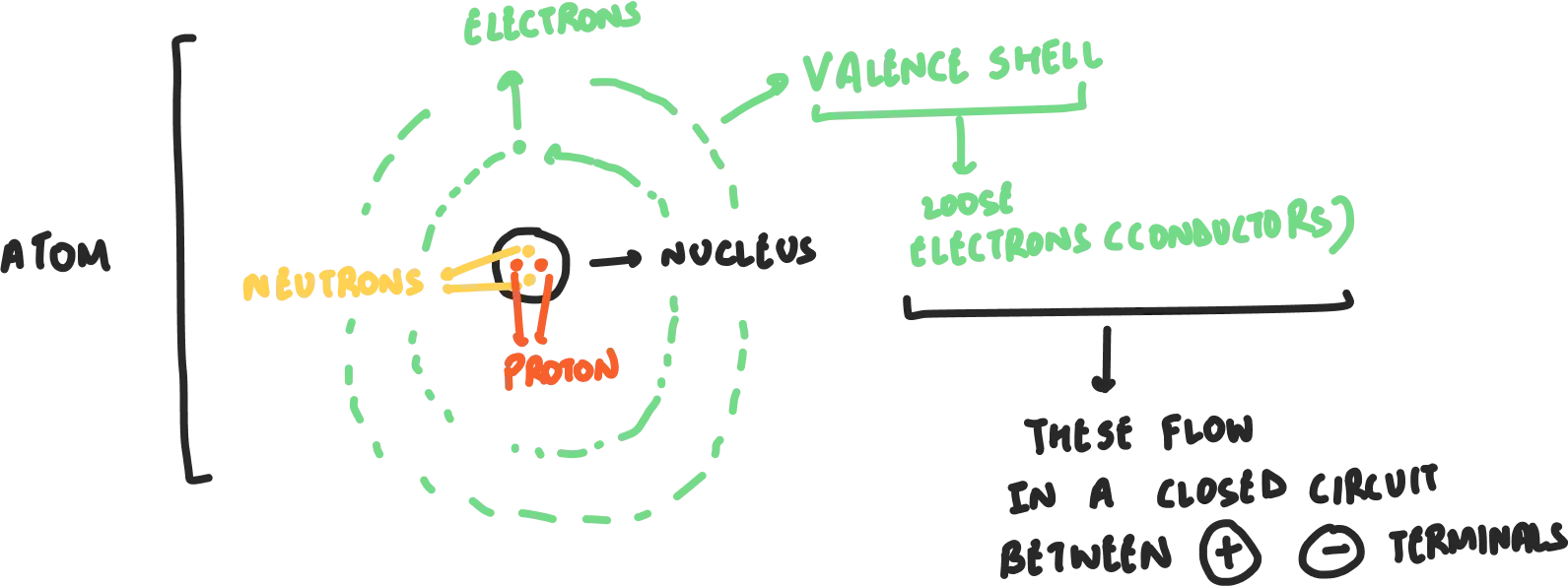used this: https://www.youtube.com/watch?v=mc979OhitAg
everything is made of atoms.
atoms contain electrons, that are loose in conductive materials (such as metal). in a closed circuit, electrons flow from positive to negative terminals to generate an ‘electric-flow’, or current. tom also said, in ipc_class-1, that electricity always moves from ‘high’ (voltage) to ‘low’ (ground (gnd)) areas.

voltage:
pushing force of electrons in a circuit. this is generated by a power source, such as a battery. this means that the power source (or between point-a to point-b) can send electrons with a certain force (the potential energy of the circuit). measured in volts.
also expressed as:
volt - joules (heat) / colomb (group of electrons (6.25 × 10^18 electrons.))
from practical electronics for inventors:
To get electrical current to flow from one point to another, a voltage must exist between the two points. A voltage placed across a conductor gives rise to an electromotive force (EMF) that is responsible for giving all free electrons within the conductor a push. As a technical note, before we begin, voltage is also referred to as a potential difference or just potential—they all mean the same thing. We’ll avoid using these terms, however, because it is easy to confuse them with the term potential energy, which is not the same thing. A simple flashlight circuit, consisting of a battery connected to a lamp, through two conductors and a switch, is shown in Fig. 2.4. When the switch is open (“off”), no current will flow. The moment the switch is closed, however, the resistance of the switch falls to almost zero, and current will flow. This voltage then drives all free electrons, everywhere within the circuit, in a direction that points from negative to positive; conventional current flow, of course, points in the opposite direction (see Benjamin Franklin).
current:
flow of electrons through a conductor. a circuit can afford to push x electrons, but how much is actually flowing between two points? this, as i understand it, is the conversion of potential energy to kinetic energy. measured in amperes, where 1 ampere = 1 coulomb (which is ~6.25 × 10^18 electrons).
also expressed as:
1 amp = 1 coulomb
resistance:
opposition to current flowing in a circuit. this is usually created by intentionally or unintentionally (because every material has some resistance) causing collisions of electrons, and getting them to expend heat. air has resistance, but an infinitely higher one, and therefore does not allow any current to pass through the conductive-points it touches. a resistor on the other hand has a lower resistance, and, therefore, allows some current to pass through.
electricity can also produce magnetic-fields, with electromagnetism.
250930_1506:
think about electricity as electrons moving from high potential areas t